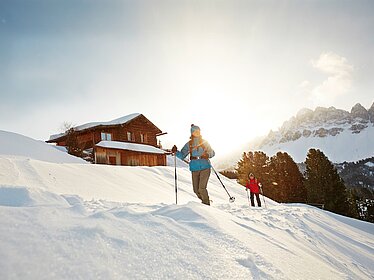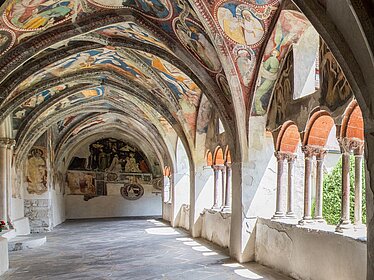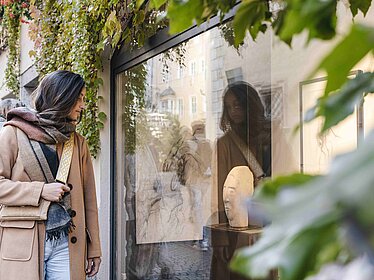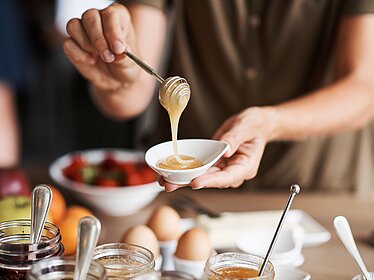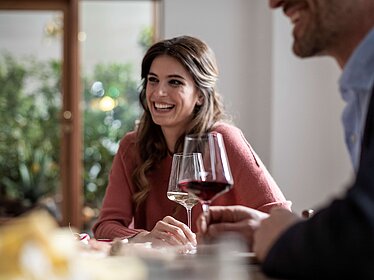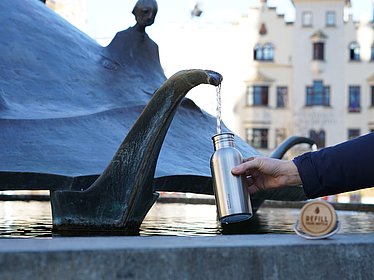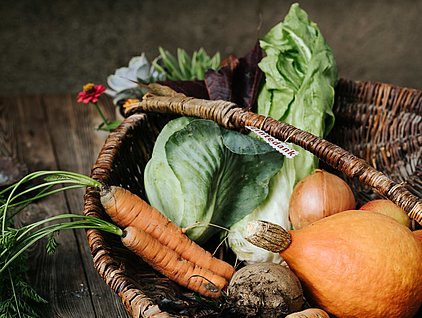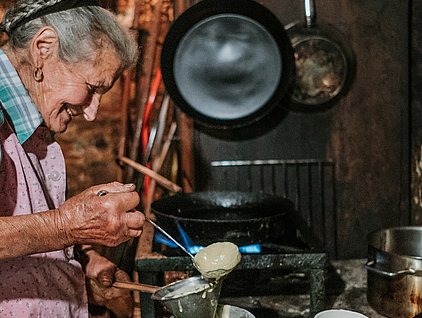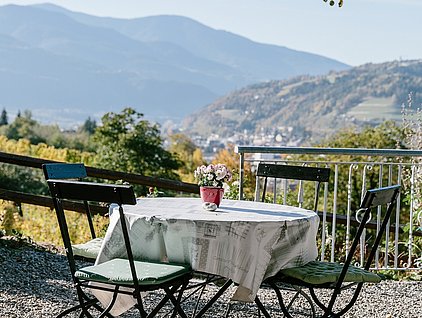Exploring the great outdoors
Urban Vibes
A feast for the senses
My holiday
Menu
Exploring the great outdoors
-
Exploring the great outdoors
- Bike
- Hiking and walking
- Skiing and winter sports
Menu
Urban Vibes
-
Urban Vibes
- Vibrant old town
- Art and culture
- Shopping
- Water
Menu
A feast for the senses
-
A feast for the senses
- White wine
- Local products
- Törggelen harvest festival
- Dining
Menu
My holiday
-
My holiday
- Brixen as a holiday destination
- Arrival and local travel
- The latest from Brixen
- Events
- Holidaying in Brixen
- Home
- Magazine Onpage Detail
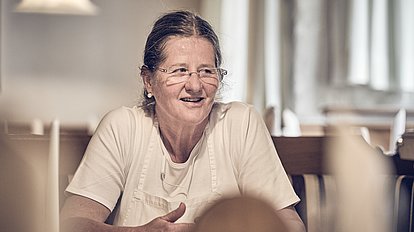
The dumplings are ready when they’re ready!
Antonia Fink, innkeeper at the traditional Fink inn in Brixen, on nettles from the forest, country-style cooking with a Mediterranean twist, and her discerning guests.
Antonia, if you had to choose one typical dish from our region to prepare for a guest, what would you make?
Schlutzer– half-moon-shaped pasta parcels similar to ravioli. They’d be homemade, of course, freshly prepared, and preferably filled with nettles. I’d make the dough using local hay milk, which comes from cows fed a natural diet of grass, herbs and hay. I’d also use Schwarzplent, which is our word for buckwheat. Buckwheat fields were once a very common sight in the Eisacktal valley, but now they have almost all disappeared. Recently, however, our farmers have started to revitalise this tradition. Some even produce pear flour from powdered dried pears. My husband picks our nettles from the forest and, if we’re lucky, he’ll find some hop shoots too. Yes, I think I’d make Schlutzer, but then...
But what?
We are in Brixen. And you can’t come to Brixen without trying our wine soup – it’s almost sacred in these parts! With its beautiful tartness, yet mild, well-rounded and intense flavour, some say it’s just like the people of the Eisacktal valley. As with virtually all traditional dishes, there’s no recipe. Instead, the ingredients and method were passed down by word of mouth from one generation to the next. Cooks would ask around for tips, share their secrets and keep trying until they got it right. The key is to add as many root vegetables as possible and to not let any egg yolk into the mix.
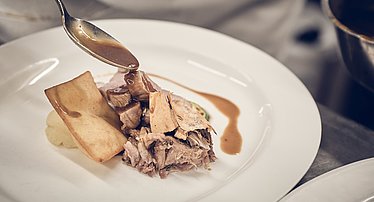
Why does the food taste so good here in Brixen? What’s the secret?
We’ve always been inspired by Italian cuisine. It’s taught us the art of transforming a few ingredients into something magical. And we’ve learnt a lot from how Italians tend to revolve their entire day around cooking and eating. Our food is a unique blend of country-style cooking and Mediterranean influences. That said, in more recent years, many inns – ourselves included – have put increasing emphasis on local specialities. Char caught from our rivers and lakes instead of seafood spaghetti, for example.
Why is this new regional focus so important?
It’s our love of local ingredients which is making all the difference. Our desire to choose only fresh produce – and to make full use of everything growing and living outside our own front door. I’m a religious woman, and when I’m cooking I listen to worship music and pray with rosary beads. We need to stop taking living creatures like lambs and hares for granted and see them as gifts instead. Communication between the different inns which have adopted this regional approach is very important. By bringing together South Tyrolean inns, the Südtiroler Gasthäuser initiative is helping to promote and preserve our local cuisine. The group’s members often source ingredients together, visit other inns in the region and sample each other’s delicacies.
You can’t come to Brixen without trying our wine soup – it’s almost sacred in these parts.
Antonia Fink
How have your guests changed over the years?
They’ve become more worldly and inquisitive. They’re also more discerning and make a conscious effort to eat local cuisine. This means they’re much more likely to choose an offal stew – or Beuschel as we call it – made using locally sourced ingredients than a fillet steak from who knows where. They want us to use the whole animal! They also understand that good food takes time. I often say: “You have to wait for the dumplings. They’re ready when they’re ready.” More and more of my guests appreciate this now, and wouldn’t have it any other way.
How would you describe your relationship with the local farmers?
It’s very important. As innkeepers, we must take an active interest in farming – and vice versa. I’ve seen how well our farmers treat their livestock, so I handle their produce with more respect than I would a boiled fillet of beef from a vacuum pack, for example. Our farmers have also become incredibly creative. All I have to do is look up at the mountain and from the top of my head I can think of three young farmers who are successfully growing vegetables, herbs and lettuce varieties which have not been seen for over a hundred years. I like to go from farm to farm, asking the farmers if I can walk through their fields to see what new ingredients I can find. It’s so exciting! Sometimes I even come across wild garlic. When that happens, I go back to the inn with two kilos in my backpack and announce that wild garlic gnocchi will be on the menu that day.
Text: Lenz Koppelstätter
Pictures: Andreas Tauber
Date of publication: 2021



